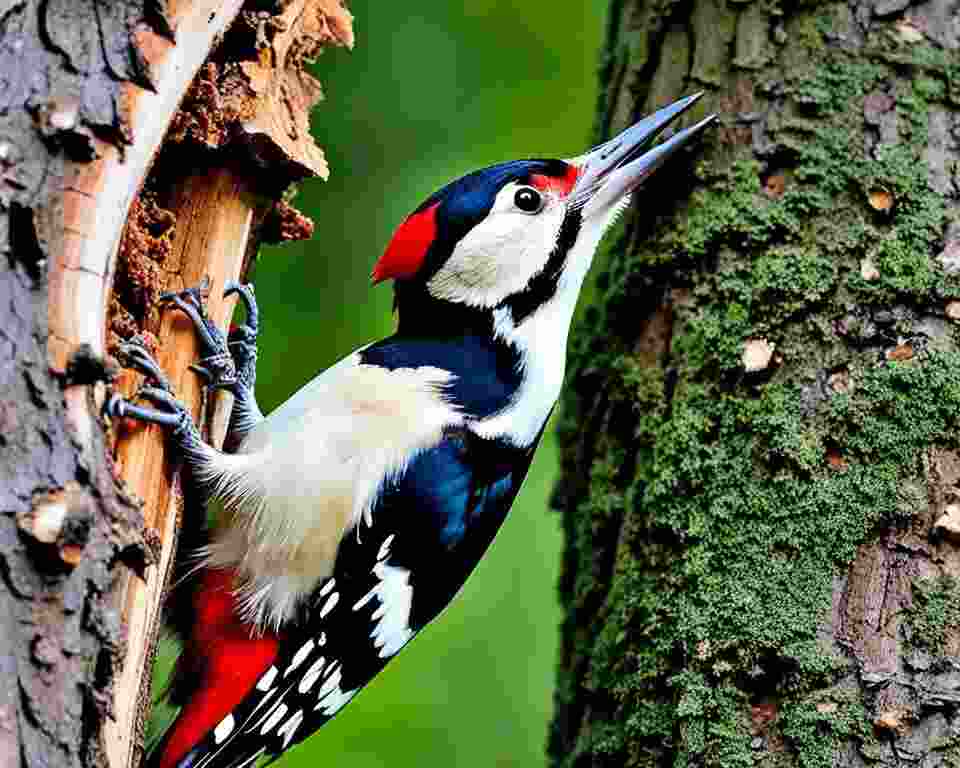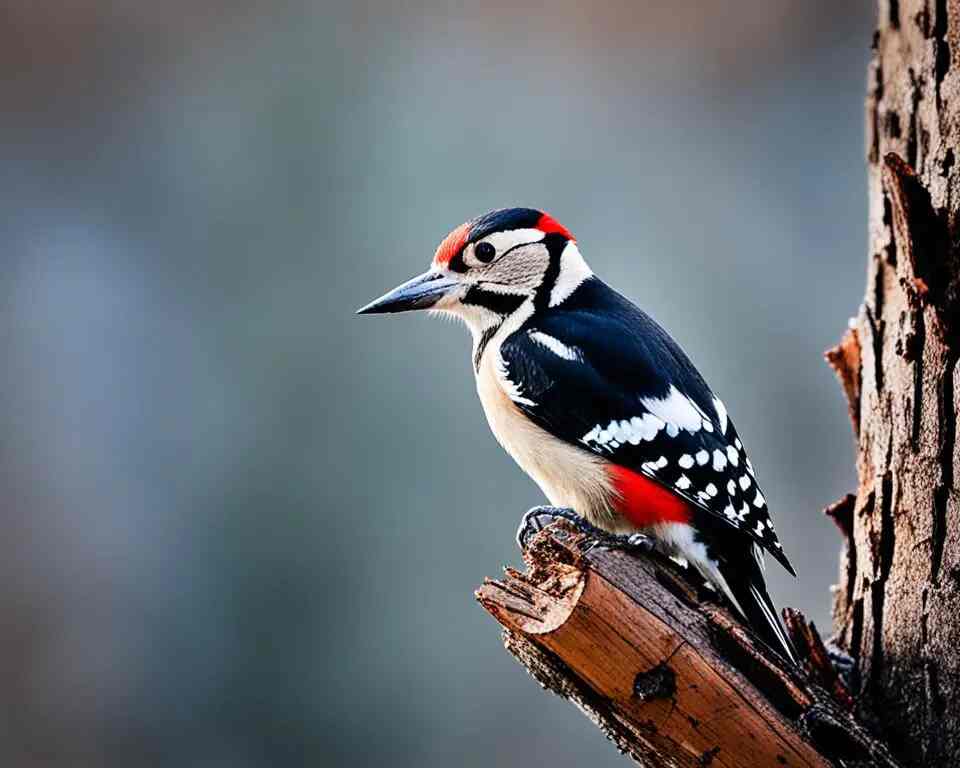Have you ever heard a woodpecker tapping away in the trees? The Great Spotted Woodpecker is one of those birds you might spot in forests across Europe and Asia. With its striking black and white feathers and loud calls, it’s hard to miss! In this article, we’ll take a closer look at this interesting bird.
We’ll talk about where it lives, what it likes to eat, and why it’s important to protect. So, let’s dive in and learn more about the amazing Great Spotted Woodpecker!
Table of Contents
Key Takeaways:
- The Great Spotted Woodpecker is not currently considered an endangered species.
- Monitoring population trends and conservation efforts is important for their long-term survival.
- Habitat changes and human activities pose significant threats to their populations.
- Protecting their habitats and raising awareness are crucial for the conservation of this remarkable bird species.
The Natural History and Current Range of Great Spotted Woodpeckers
The Great Spotted Woodpecker, known scientifically as Dendrocopos major, has an intriguing history and a broad distribution. It lives all over Europe and Northern Asia, in woods of all kinds. These include broadleaf forests, coniferous areas, and mixed woodlands.
These birds are well adapted to their homes in the wild. Their powerful beak helps them make nest holes in trees and look for food. They also have a skull that absorbs shock. This protects their brain when they drum on trees to talk to one another and mark their territory.
The Great Spotted Woodpecker has unique ways of finding its food. It eats insects like beetles and ants, foraging on tree trunks and branches. They also eat tree seeds, which helps spread plant species. Sometimes, they might even eat other birds’ eggs and chicks, showing they take advantage of different food sources.
It’s vital to know about the biology and habits of the Great Spotted Woodpecker to keep them safe. By understanding their history, home range, and special traits, experts can spot dangers they face. This knowledge helps create plans to protect these woodpeckers.
| Natural History | Range | Unique Adaptations | Woodpecker Behavior |
|---|---|---|---|
| Wide distribution across Europe and Northern Asia | Inhabits various types of woodlands | Strong beak and shock-absorbing skull | Drums on trees for communication |
| Excavates nest holes | Specialized feeding behaviors |
How Endangered Is the Great Spotted Woodpecker?
The Great Spotted Woodpecker, known as Dendrocopos major, is not highly endangered. It is seen as “Least Concern” by the IUCN. Yet, some populations are facing risks.
Conservation Status: Least Concern but with Notable Regional Trends
The species is doing okay overall but has challenges in some places. Being “Least Concern” doesn’t mean we can ignore them. We need to look closely at at-risk populations and help.
Targeted efforts can protect these groups. It’s about finding and supporting areas under threat.
Threats to Great Spotted Woodpeckers: Habitat Loss and Human Activities
Habitat loss is a big problem for them. Deforestation and urban sprawl destroy their homes. This makes it hard for woodpeckers to live and thrive.
Logging, pollution, and pesticides also hurt them. We must cut down these harmful activities. This helps woodpeckers survive long-term.
Migration and Mobility: The Resilience of Great Spotted Woodpeckers
This bird can move to escape trouble. Its ability to migrate helps it deal with environment changes. Different groups travel distances based on need.
Finding new places to live during migration is key for them. We need to protect their habitats throughout their journey. This keeps their population healthy.
Threats to Great Spotted Woodpeckers
| Threat | Description |
|---|---|
| Habitat Loss | Deforestation, urbanization, and land conversion leading to the destruction and fragmentation of natural habitats. |
| Human Activities | Logging, pollution, pesticide use, and other anthropogenic actions that directly or indirectly impact woodpecker populations and their resources. |
Conclusion
The Great Spotted Woodpecker, while not endangered, still needs our attention for conservation. We must keep an eye on their numbers and tackle threats they face. Habitat loss is a big risk for them, caused by cutting down forests and city growth. Human actions also disturb their living spaces.
To protect this amazing bird, our efforts should aim at preserving their homes and spreading the word about their role in nature. By looking after the places they live, we help keep the Great Spotted Woodpecker around. This also helps keep nature’s balance.
Even if they’re not yet endangered, the drop in their numbers in some places is worrying. This shows why it’s vital to stay ahead in conservation work. If we all work together to lessen threats and promote green living, the Great Spotted Woodpecker will continue to enliven our forests. Their bright presence is a joy we should strive to secure.




